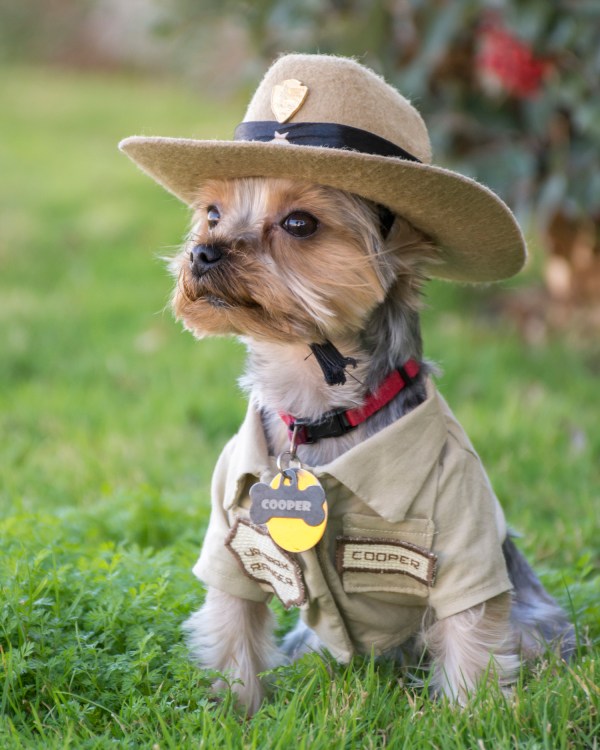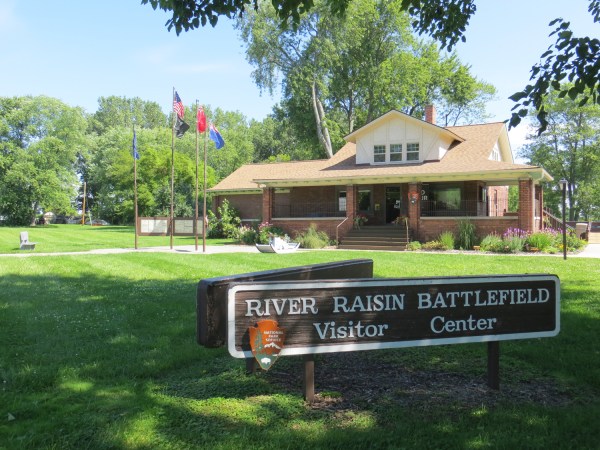It’s the perfect time of year to take the family out exploring the beautiful national parks our country has to offer. For many families, that also includes Fido—or in my case, Cecelia and Reggie.
When my husband and I sit down to plan a vacation, accommodating our four-legged children is a priority. We love to bring them on our adventures, especially if it includes a visit to a national park. In fact, Cecelia has been to so many parks over the last seven years that she probably should have her own national park pass.
Whenever we visit a park, we’re pleased to see other families and individuals sharing the experience with their dogs. Moreover, the National Park Service recognizes that dog owners are passionate about including their pets in their park adventures. Over the years, parks have become more dog friendly, with several parks creating some amazing programs geared toward dog owners.
If you’re camping, several national parks, including Yellowstone, allow dogs at their campgrounds. Lake Mead National Recreation Area recently expanded its pet program to include experiences such as ranger-led dog hikes. Most of the park, with the exception of the backcountry, is open to dogs and their owners. They even have two Junior Park Ranger mascots: a Yorkie named Cooper and a golden retriever named Charlotte. Cooper and Charlotte help the park rangers during education classes and even have their own uniforms. And visits to Lake Mead NRA are not just limited to your dog—other pets are allowed as well.

Photo source: National Park Service.
Heading out on a day trip? You’ll be surprised at the possibilities. On a recent visit to Michigan, we decided to pull into River Raisin National Battlefield Park. It made a good stopping point on our drive, and was a fairly new historical park that I had yet to visit. The park has a wonderful trail system that allows you and your pet to explore battlefields and settlements.

Our pups thoroughly enjoyed stopping to smell everything while we learned about the role River Raisin played in the War of 1812. They even made friends with a few of the rangers. Best part? They had such a great time that they passed out in the car for the rest of the afternoon. So if you’re planning a long drive with a dog, consider stretching everyone’s legs at a national park along the way.
Of course, there is some preparation that goes into visiting a national park with your pet. Most importantly, before you leave home, visit the National Park Service website. Each park page has a pet section that explains specifically where you are allowed to take your dog at any given time. Certain areas may be closed to dogs based on wildlife activity and nesting. You would not want your dog interfering with—or being hurt by—wildlife. So following these access guidelines is essential just as leave no trace principles are for humans.
One of the biggest complaints I hear from rangers concerns unleashed dogs. Keep your dog on a leash at all times to protect them, other visitors and wildlife. Also, please remember to pick up after your pet. Not only does this keep trails clean, but it helps maintain the park’s ecosystem. Several parks, such as Prince William National Forest in Virginia, even have a strict carry-out policy, meaning any trash brought into the park must be taken out. You will not find any trashcans to throw that bag in. Finally, keep your pets’ needs in mind: Bring enough water for them, especially during hot months, as well as treats. Portable dog bowls and/or water dispensers make this easy.
One last suggestion: If you live close to a national park, consider volunteering with your dog. Several national parks have “dog volunteer” programs aimed at educating visiting dog owners about rules and options. The “Trail Rovers” program at Carl Sandburg National Park in North Carolina has been in effect for over 15 years. Each week, about 30 volunteers, each with their dog, roam the trails wearing special volunteer bandanas: They talk with other dog owners about the importance of picking up after a pet as well as keeping a dog on a leash. Sleeping Bear Dunes in Michigan has just begun organizing their “Bark Rangers” program: It will help pet owners stick to trails and beaches where dogs are permitted while protecting nesting areas for the endangered piping plover.
Interested? Contact your local park to find out whether they have a program, and if so, how you and your dog can get involved.
There are many ways to enjoy our national parks, and the park service is making it easier than ever to bring along your best friend. So gather up your gear, grab the leash (and a few of those poo bags) and get out there! Find not just your park, but Fido’s park as well.
Cecelia and Reggie look forward to seeing you out there.
Featured photo by Barbara Bonner in Great Sand Dunes National Park.
Download the National Park Mobile App on iOS or Android and learn more about the national parks on REI.com.
